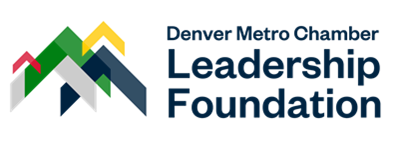As business leaders, it’s vital we understand the role that racist housing policies play in shaping cities and limiting wealth for families and individuals of different races. As we more deeply examine systemic inequality in our nation, we should work to understand the connections between homeownership, wealth and the criminal justice system. When we understand these systems and how they are related, we can take anti-racist action in our lives and communities. Those are a few of the takeaways from our recent Virtual Voices on redlining.
Virtual Voices aims to keep Denver Metro Chamber Leadership Foundation alums informed and engaged as our community works through this challenging time. Each virtual meeting brings together leaders on the front lines of impacted industries to share their knowledge, perspectives and leadership lessons.
This week, Virtual Voices was structured a bit differently as we were joined by two Leadership Denver alums, Maria Sepulveda, vice president, community and government partnerships at Habitat for Humanity of Metro Denver, and Jonathan Cappelli, founder at Cappelli Consulting, LLC, as well as Katie McKenna, senior program director at Enterprise Community Partners to discuss redlining in Denver.
Maria, Jonathan and Katie shared brief presentations on redlining and its lasting impact in areas of health, education, criminal justice and homeownership.
Check out our key takeaways and the video of the webinar below.
Redlining securely buttressed racial segregation in American cities. Redlined communities were primarily communities of color and labeled as areas where loans would be high-risk. 64% of communities redlined in the 1930s are still primarily communities of color today and are particularly vulnerable to gentrification.
The racial wealth gap can be tied directly to redlining and the inability to own one’s home. The disparity between wealth in Black and white households has continued to grow, despite legislation such as The Fair Housing Act. While wealth gaps are driven by a variety of factors, homeownership is one of the top sources to grow generational wealth. 53% of wealth for Black families comes from homeownership. Home ownership rate among white people is 1.7 times that of Black people and 1.5 times that of Latinos. and the net worth of a typical white family ($162,770) is 7.5 times that of a typical Latino family ($21,360) and 10 times that of a typical Black family ($16,300). Redlining hurt the inability for people of color to qualify for loans and in turn greatly diminished their opportunity to build wealth.
Housing insecurity and the wealth gap are directly related to crime rates. Research has shown that poverty is linked to non-violent property crime. 86.6% of pre-incarceration incomes of current US prisoners was $15,000 or less. The incarceration rate for individuals born into low income families is 20 times that of those born into high income families. Colorado spends $1 billion annually on its prison, which has “housed” more people than affordable housing programs have in the state.
Addressing systemic inequality is a multi-faceted challenge. Ultimately, there is no blueprint showing us where to start solving these problems. As business leaders and individuals, we need to begin enacting change and anti-racist solutions in our own industries and communities. Without shelter, people struggle to focus on work, school or health. Increasing homeownership will in turn make our society more equitable.
Join us for an upcoming Virtual Voices. Check out our upcoming programs.
- Virtual Voices: Technology Today – 11 a.m. to noon, Nov. 11

